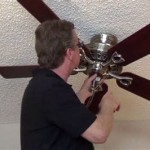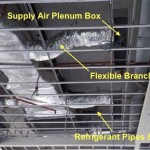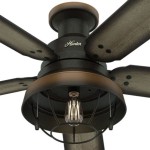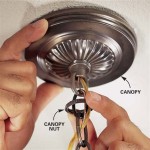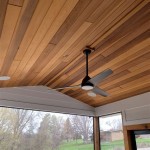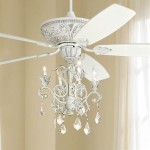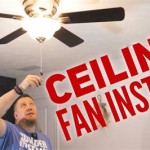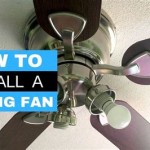Understanding Heat Vents in Ceilings: A Comprehensive Guide
Heat vents in ceilings, a common feature in many residential and commercial buildings, play a crucial role in distributing warm air throughout a space. Their functionality and efficiency are directly tied to the overall comfort and energy consumption of the building. Understanding the principles behind their operation, the different types available, and the factors affecting their performance is essential for homeowners, building managers, and HVAC professionals alike. This article provides a detailed overview of heat vents in ceilings, covering their purpose, types, installation practices, maintenance, and potential challenges.
The primary purpose of heat vents, regardless of their location, is to deliver heated air from the furnace or heat pump into the living spaces. When located in the ceiling, heat vents take advantage of a fundamental principle of physics: warm air rises. This natural convection process aids in the efficient distribution of heat, theoretically promoting a more uniform temperature throughout the room. However, several factors can influence this effectiveness, including the vent's design, the room's layout, insulation levels, and the HVAC system's overall performance.
The placement of heat vents in the ceiling is often dictated by the building's design and the HVAC system's configuration. In many modern homes with forced-air heating systems, ductwork runs through the attic or between floors, making ceiling vents a practical and often cost-effective solution. While floor vents are sometimes preferred in certain regions due to perceived better heat distribution, ceiling vents offer advantages in terms of aesthetics and safety, as they are less likely to be obstructed by furniture or become tripping hazards.
Key Considerations in Choosing Ceiling Heat Vents
Selecting the appropriate ceiling heat vent requires careful consideration of several factors. These factors include the type of vent, its size, its material, and its adjustability. A well-chosen vent will not only effectively distribute heat but also contribute to the overall aesthetic appeal of the room.
One of the primary considerations is the type of vent. Different designs are available, each offering unique advantages. For instance, adjustable vents allow for directional control of the airflow, enabling occupants to customize the heating in specific areas of the room. Diffusers, on the other hand, are designed to disperse air more evenly, reducing drafts and creating a more comfortable environment. The choice between these options depends on the room's specific needs and the occupants' preferences.
The size of the vent is another critical factor. The vent's size should be proportional to the size of the room and the amount of heated air being delivered. An undersized vent may restrict airflow, leading to inefficient heating and potential damage to the HVAC system. An oversized vent, conversely, may result in uneven heating and uncomfortable drafts. Proper sizing requires consulting with an HVAC professional or using established sizing guidelines based on the room's square footage and heating load.
The material of the vent also plays a role in its performance and longevity. Metal vents, typically made of steel or aluminum, are durable and resistant to rust and corrosion. Plastic vents are less expensive but may be more prone to cracking or discoloration over time. The choice of material often depends on the budget and the desired aesthetic, as well as the environmental conditions to which the vent will be exposed. Considerations such as humidity and potential for physical impact should influence this decision.
Finally, the adjustability of the vent is an important feature to consider. Adjustable vents allow occupants to control the direction and volume of airflow, providing greater comfort and energy efficiency. This feature is particularly useful in rooms with varying heating needs or in homes with multiple occupants who have different temperature preferences. Adjustable vents can also be used to redirect airflow away from specific areas, such as windows or doors, where heat loss is more likely to occur.
Installation and Maintenance of Ceiling Heat Vents
Proper installation and regular maintenance are essential for ensuring the optimal performance and longevity of ceiling heat vents. Incorrect installation can lead to inefficient heating, increased energy consumption, and potential safety hazards. Neglecting maintenance can result in dust buildup, reduced airflow, and even the growth of mold or mildew.
The installation process typically involves attaching the vent to the ductwork using screws or clips. The vent should be securely fastened to prevent air leaks and ensure that it remains in place during operation. It is crucial to ensure that the vent is properly aligned with the ceiling and that there are no gaps or obstructions that could impede airflow. Sealing any gaps with caulk or sealant can further improve energy efficiency.
Regular maintenance should include periodic cleaning to remove dust and debris that can accumulate on the vent's surface. Dust buildup can restrict airflow and reduce the vent's efficiency. Cleaning can be done with a vacuum cleaner or a damp cloth. For vents that are heavily soiled, a mild detergent can be used. It is important to avoid using harsh chemicals or abrasive cleaners, as these can damage the vent's finish.
In addition to cleaning, it is important to inspect the vent regularly for signs of damage or wear. Cracks, dents, or loose fasteners should be addressed promptly to prevent further deterioration. If the vent is damaged beyond repair, it should be replaced. Regular inspections can also help identify potential problems with the ductwork, such as leaks or blockages, which can affect the vent's performance.
Professional HVAC technicians can also provide valuable maintenance services, such as duct cleaning and vent calibration. Duct cleaning removes accumulated dust and debris from the ductwork, improving airflow and air quality. Vent calibration ensures that the vent is properly adjusted to deliver the correct amount of heated air. These services can help optimize the HVAC system's performance and extend the lifespan of the vents.
Troubleshooting Common Issues with Ceiling Heat Vents
Despite proper installation and maintenance, homeowners may encounter various issues with their ceiling heat vents. Common problems include insufficient heat output, uneven heating, excessive noise, and drafts. Troubleshooting these issues requires a systematic approach to identify the underlying cause and implement appropriate solutions.
Insufficient heat output can be caused by several factors, including a malfunctioning furnace, a clogged air filter, or a blocked duct. To diagnose the problem, start by checking the furnace to ensure that it is operating correctly. Verify that the air filter is clean and that the ductwork is free of obstructions. If the problem persists, consult with an HVAC professional to inspect the system for more complex issues.
Uneven heating can be caused by imbalances in the airflow distribution. This can occur if some vents are partially blocked or if the ductwork is not properly designed. To address this issue, check all vents to ensure that they are fully open and unobstructed. If necessary, adjust the vent dampers to redistribute airflow more evenly. In some cases, it may be necessary to modify the ductwork to improve airflow distribution.
Excessive noise can be caused by loose vents, vibrating ductwork, or a noisy blower motor. To identify the source of the noise, listen carefully to the vents and ductwork while the HVAC system is operating. Tighten any loose vents and insulate vibrating ductwork with sound-deadening material. If the noise is coming from the blower motor, consult with an HVAC professional to inspect and repair the motor.
Drafts can be caused by air leaks around the vents or by cold air entering the room from outside. To identify air leaks, use a smoke pencil or a thermal imaging camera to detect areas where air is escaping. Seal any leaks with caulk or sealant. To reduce cold air infiltration, ensure that windows and doors are properly sealed and insulated.
Addressing these common issues promptly can improve the comfort and energy efficiency of the home. In many cases, simple troubleshooting steps can resolve the problem. However, for more complex issues, it is always best to consult with a qualified HVAC professional.
In conclusion, ceiling heat vents are a vital component of residential and commercial heating systems. Understanding their purpose, types, installation, maintenance, and potential problems is crucial for ensuring optimal performance, energy efficiency, and comfort. By carefully considering the factors discussed in this article, homeowners and building managers can make informed decisions about their heating systems and create a more comfortable and energy-efficient living environment.

The Benefits Of Using Ceiling Hvac Vents

Ceiling Ac Vents Pros And Cons Aire Serv

Changing All My A C Heating Ceiling Vents For Better Airflow Between Naps On The Porch

Heating Vents Greg Maclellan

Replacing A Heat Vent Register

How Do You Clean Heating Ducts In The Ceiling Duct Masters

Heating Vents Greg Maclellan

Changing All My A C Heating Ceiling Vents For Better Airflow Between Naps On The Porch

How To Open And Close Ceiling Air Vents

Magnetic Office Vent Cover Adjustable Air Deflector For 24 X Flat Ceiling Vents Conditioner Or Heat 1 Pack Com
Related Posts

